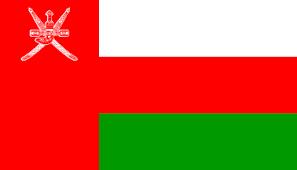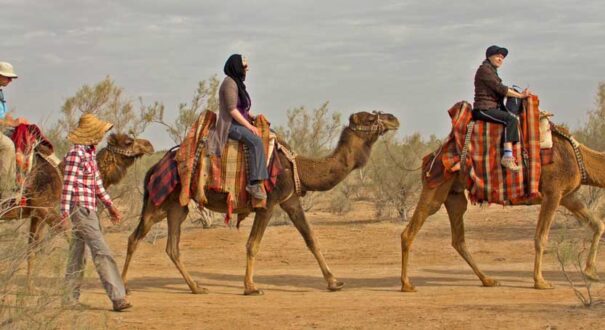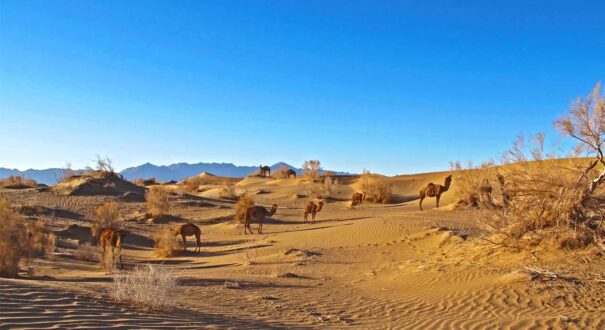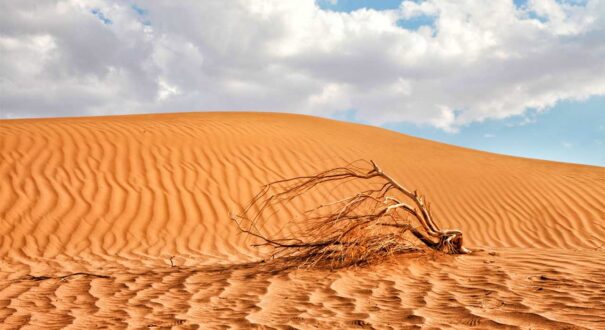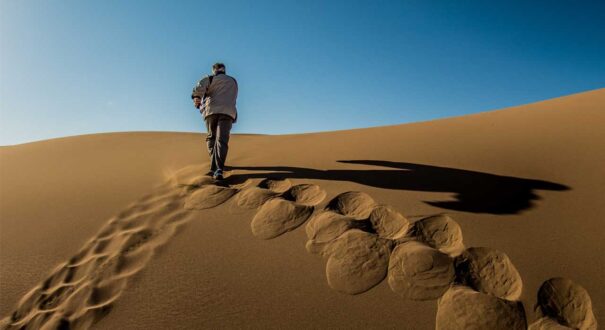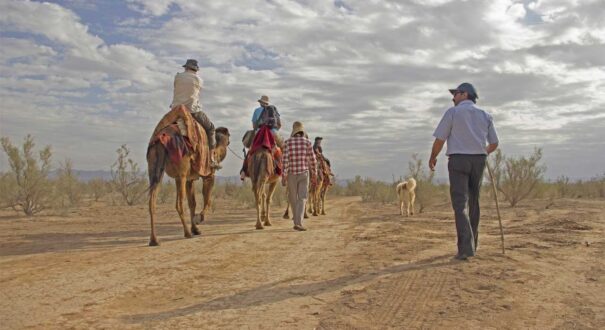
- Home
- Cities
- Iran Cities
- Natural Destinations
- Desert Cities
- Khour va Biabanak
Khour va Biabanak
description
Khour va Biabanak, an Area Filled with Sands
Khour va Biabanak is an area whose monuments demonstrate its 5000-year history. This desert city has been a part of different provinces over the years; eventually, it became a part of Isfahan. There are more than 126 large and small villages in Khour va Biabanak as the easternmost point of Isfahan Province.
The climate of Khour va Biabanak is very hot and dry so that the temperature sometimes reaches over 50 C. As a result, the old architecture and structure of this area has been designed in accordance with its climate. In order to prevent heat from penetrating, houses are made of adobe and their roofs are domed.
Khour va Biabanak has a proper vegetation in accordance with its dry nature. The hot climate of this region has provided right conditions for growing palms. As a result, palm groves in this city stand out among the khaki color of the region. The locals are often engaged in agriculture including date cultivation. Consequently, old palm groves are observed in abundance in this region. In addition, the environmental conditions of Khour va Biabanak provides conditions to breed special livestock. Therefore, breeding camel is a part of people’s lives in this region.
To have a comfortable accommodation, standard hotels with modern facilities have been established in Khour va Biabanak. However, if you would like to experience a traditional oriental life, you will be welcomed at old and renovated houses.
In this city, there are ancient castles featuring special architecture. Bayazah Castle, located in a village of the same name, is one of the most prominent castles in Khour va Biabanak. This adobe castle, built during the Sassanid era, had a defensive and residential use in the past. Above all, the footprints of Iranian architects in the design of this building are evident.

The Salt Lake of Khour va Biabanak, the Largest Seasonal Salt Lake in Iran
The Salt Lake of Khour va Biabanak is 40 km from the city center. This lake, located at the heart of the desert, includes interconnected salt polygons resembling a honeycomb. This honeycomb phenomenon is also called desert mosaic. Hence, this beautiful salt lake, covered with polygons and salt deposits, turns black in the winter and white in the summer.
It is also enchanting to watch the crystals of this salt land in sunrise and sunset. This lake, spanning about 2000 km2, is the largest seasonal salt lake and the oldest source of salt in Iran. In contrast with its vastness, the depth of this lake is low. As a result, it is one of the lowest regions of Iran plateau.
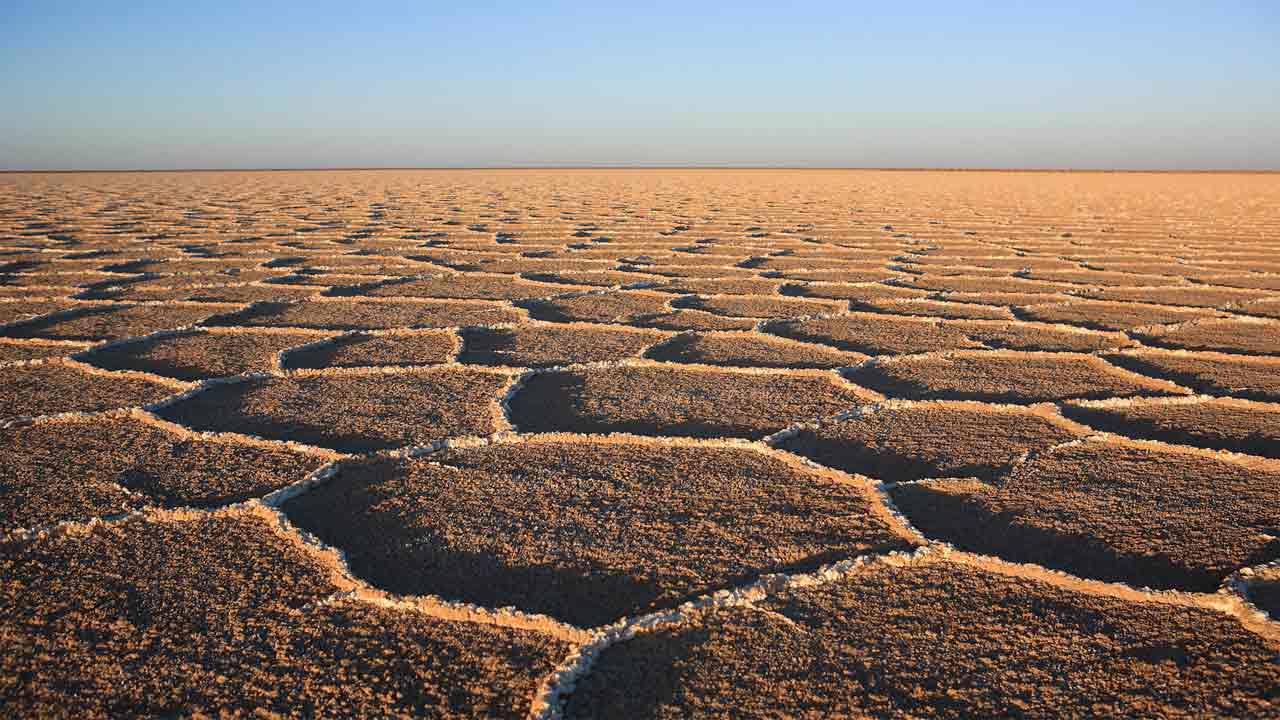
Khour va Biabanak, an Infinite Land
If we move 55 km northeast from Khor and Biyabank, we will reach a pristine desert named Mesr (literally means Egypt). Being named the same as Egypt is a reason of this desert’s fame. However, the fact is that Mesr Desert is named after a village inside. Mesr Desert, located at the heart of Dasht-e Kavir, is surrounded by the mountains in the central plateau of Iran. Surely, the mountains in the background of Mesr Desert can be the greatest gift to photographers. Moreover, watching the sunset and starry sky of the desert is among the best attractions of this region. There are also seasonal swamps and rivers in the area, which demonstrate pristine views.
The hot and dry climate of this region makes the summers unbearable. As a result, the best time to travel to Mesr Desert is autumn, winter and early spring. Actually, you can visit the sands in the morning and gaze at the starry sky at night. Undoubtedly, one of the unique attractions of the desert is photography from sand dunes, animal life and, most importantly, recording shiny stars through camera eye.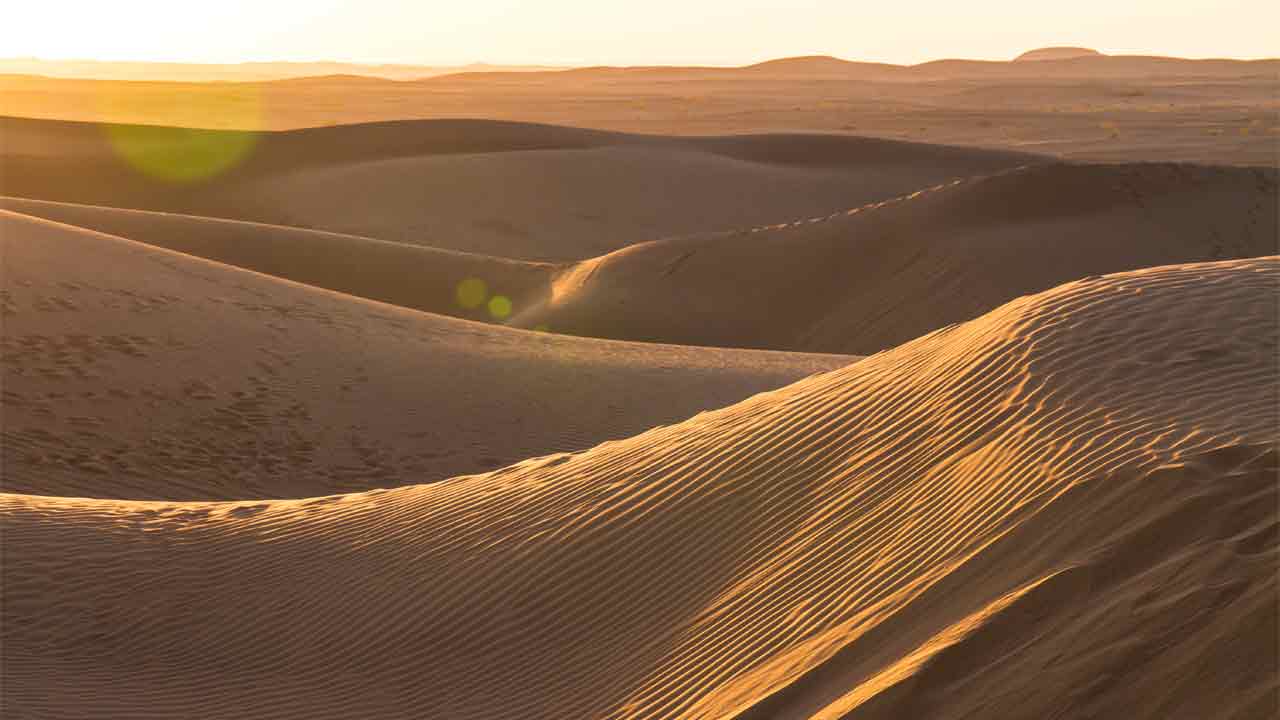
A Sand Sea in Mesr Desert
This desert is located in the foothills of the central plateau of Iran, which is full of sand dunes. Therefore, some people give it the title of "the Sand Sea of Mesr Desert".
Two famous hills, Takht-e Aroos and Takht-e Abbassi, stand out in this sand sea. In fact, Takht is referred to the hills which are higher than other hills, and their highest point is flat. It is noteworthy that this flattening occurs due to strong winds and wind erosion. In the past, these high hills were used as guides for navigation
Takht-e Aroos
On top of this high hill, you will see small hills located next to each other, just like the fold of bride's skirt! That is why this name is attributed to the hill. In addition, this name demonstrates the culture of the desert locals. Actually, the word bride is the symbol of beauty for locals. As a result, the folds of this beautiful hill deserves the name of bride. Takht-e Aroos is also made of a considerable amount of sand and includes the smallest quicksand in the area.
Takht-e Abbassi
Another giant hill in Mesr Desert is Takht-e Abbasi, located in northeast of a village called Mesr. This hill is named Abbassi due to the presence of Shah Abbas and his companions who were hunting in this area. Takht-e Abbassi has no vegetation and is covered entirely with sand and other soils. Furthermore, one side of Takht-e Abbassi, due to wind and erosion, has turned stepped shape to create an eye-catching view.
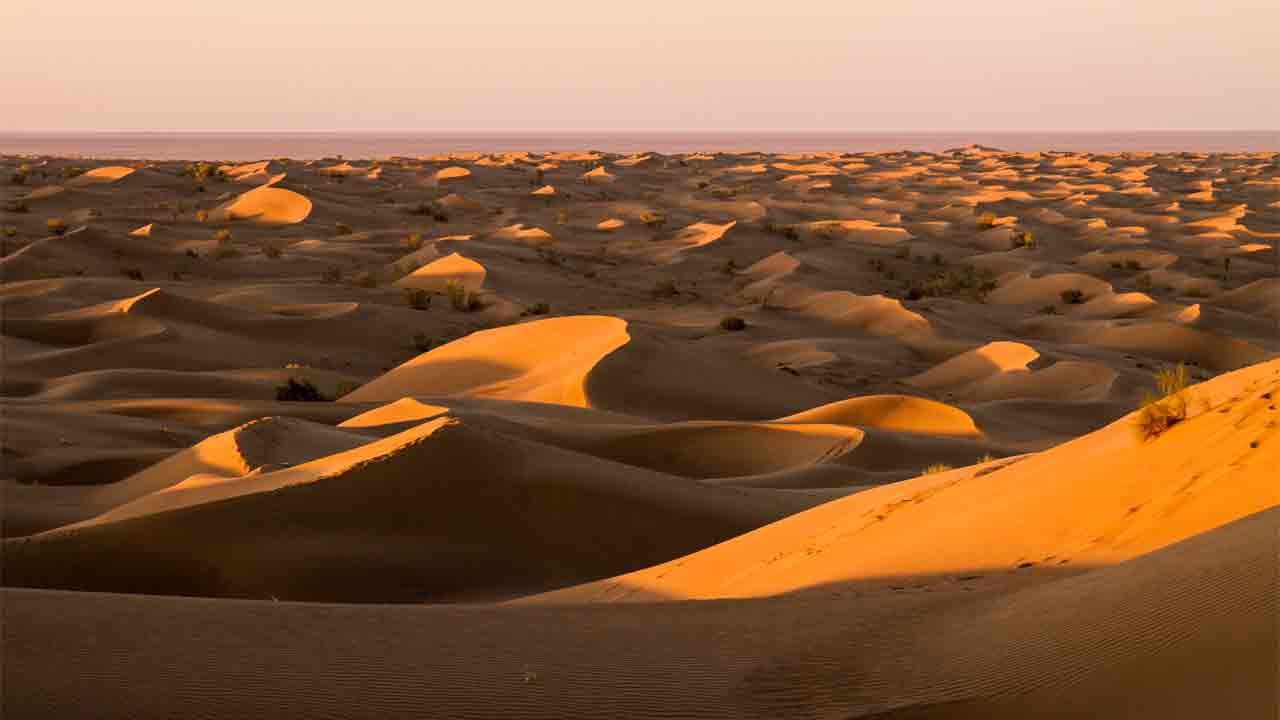
Biodiversity in Mesr Desert
Apart from the salt lake, the green vegetation and sand-loving plants stand out in the amber-colored vastness of Mesr Desert. The animal life adapted to its environment, from reptiles to quadrupeds, is also among the attractions of this desert. It is noteworthy that this desert is a protected and hunting-prohibited area.
Small Oases in Mesr Desert
What makes Khour va Biabanak shine, like its sky, are sandy villages, each of which has a unique characteristic. Every village can be a temporary residence for a short-term trip to Mesr Desert. We are going to briefly look into some villages of Khour va Biabanak located near Mesr Desert.
Mesr Village, a Well-known Residence in Mesr Desert
Mesr Village is the closest village of Khour va Biabanak to Mesr Desert. At the vicinity of this village, we come across a reed bed surrounded by sand. The water in the reed bed has made a right habitat for natural wildlife. In some cases, the height of this beautiful reed bed reaches several meters. In addition, the plants around this area has doubled its beauty. Of course, this landscape invites you to photograph and touch the animal’s lives. Returning to the tourist village of Mesr, the traditional residences in the shape of renovated local houses are good places to experience days and nights of desert.
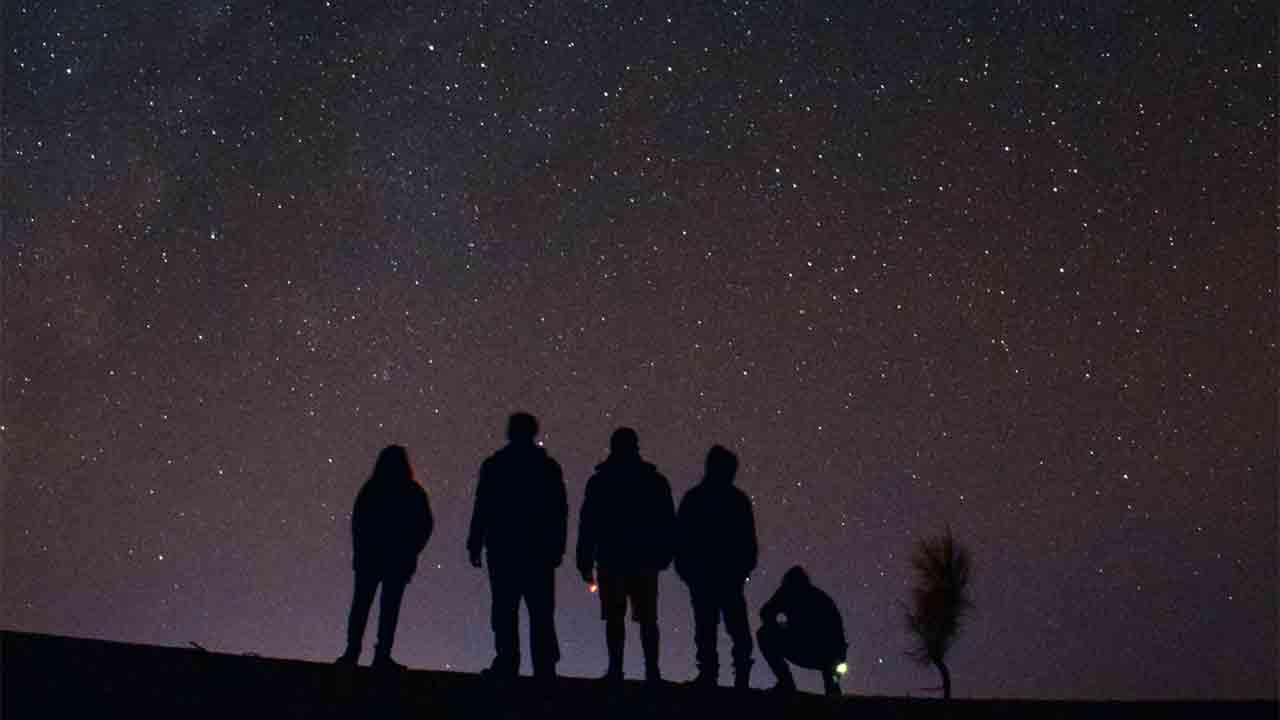
Farahzad, an Oasis Lying on the Sand
After passing Mesr Village and prior to Mesr Desert, an oasis surrounded by sand is noticed. Farahzad village is intertwined with sand dunes that it will disappear in the sand without the vegetation around. The youth of this village are involved in tourism activities by renovating their father's houses and building temporary accommodation for tourists. Farahzad Village is accessible via the dirt road.
A Bride-like Village
Arousan village (literally means brides) is located 40 km from Mesr Desert. This village is likened to bride when date groves, at the vicinity of adobe houses, dance by blowing desert wind. These adobe houses lie in the earthen pristine alleys. This village also has a river and a hot spring around. Actually, this village is approximately uninhabited today, and the locals who farmed and bred camels in the past, moved around. In order to experience a short and adventure tour to reach this village from Mesr Desert, you can accompany a camel caravan across its dirt road.
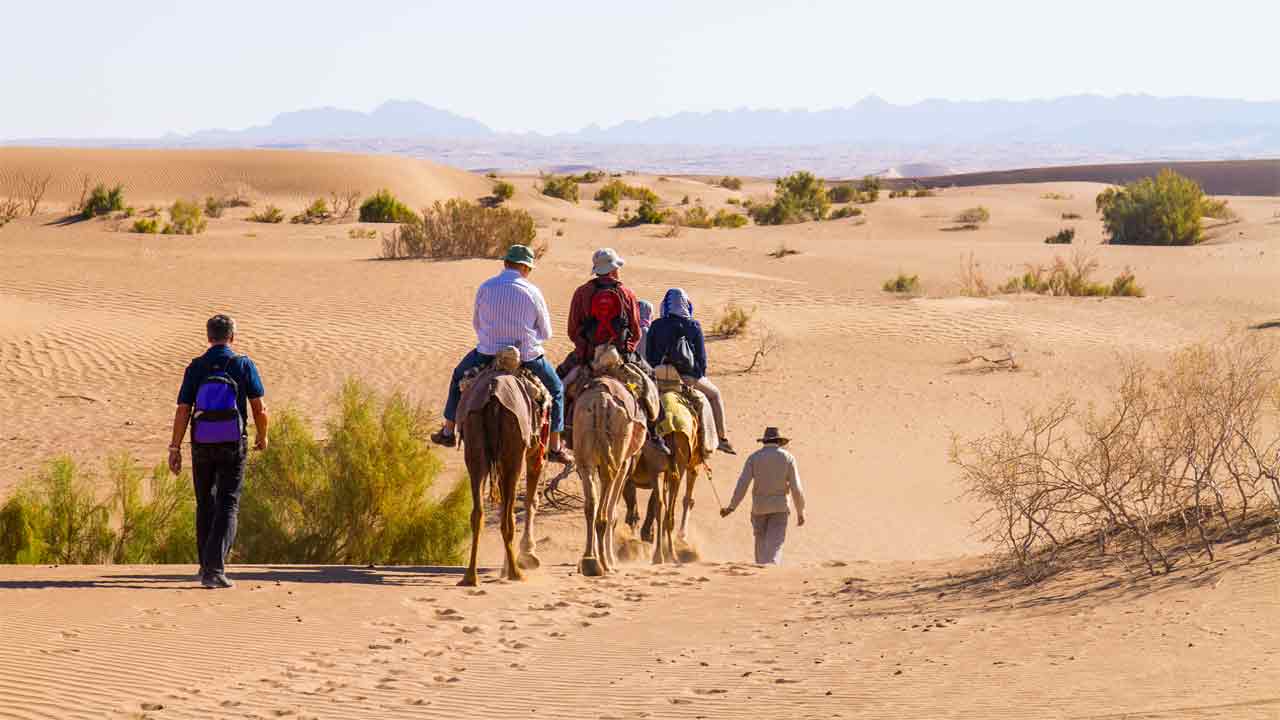
Garmeh Village, a Simple Look to Iranian Architecture
Garmeh Village lies in Dasht-e Kavir, the east of Isfahan Province. This village, located in Khour va Biabanak, was once the residence of merchants and travelers crossing the Silk Road. Garmeh Village dating back to thousands of years ago has not been subjected to the modernity. Most importantly, the attractive architecture of this village still stands, and its historical structure has been preserved.
As well as desert sands, there are green groves around Garmeh Village. Therefore, the landscape of the houses overlooking these peaceful groves combined with the silence of this village has created a pristine scenery.
The most remarkable part of this village is a castle dating back to the Sassanid era. This castle is located at the center of the village. In addition, a mosque dating back to thousands of years ago and other religious sites are worth visiting.
Garmeh village includes a spa dating back to thousands of years ago. This spring boils from the heart of a mountain lying on the red soil. Many fishes also live in this spring. The village also has ponds that are habitat for birds.
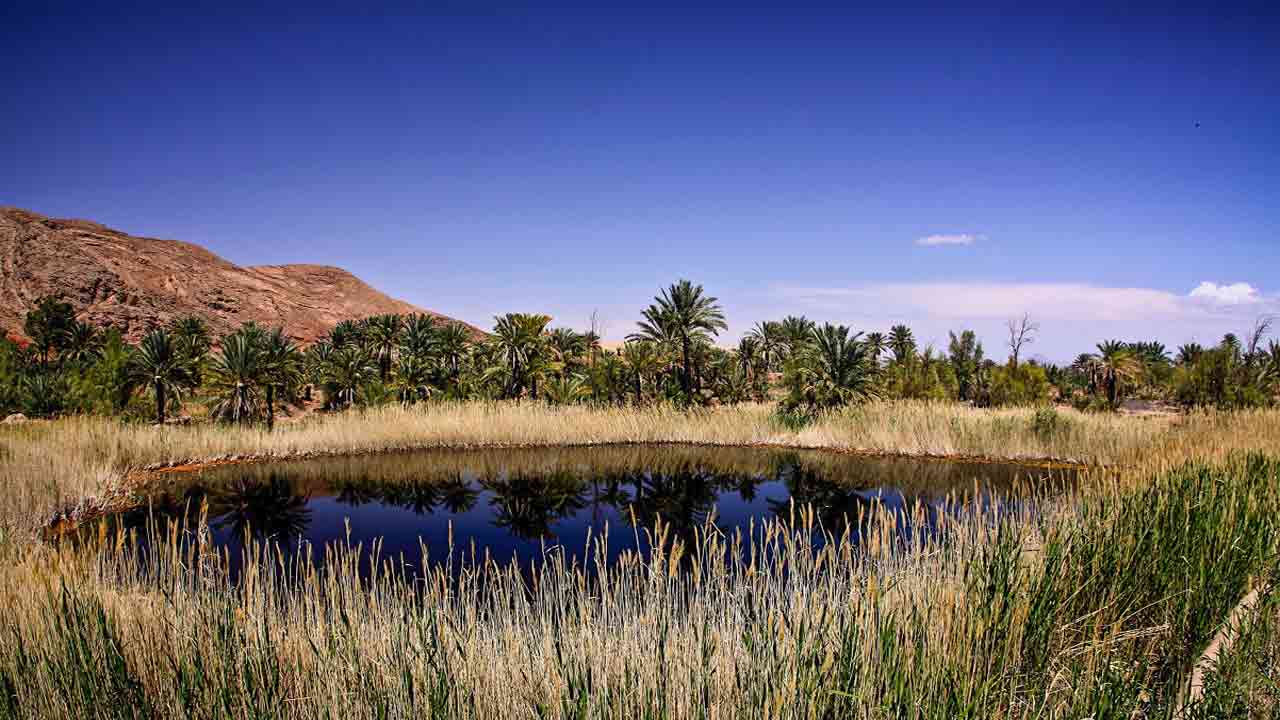
The Experience of visiting Khour va Biabanak’s Deserts
Due to being located at the heart of Iran, Khour va Biabanak is one of the rarest destinations of combined tours on the trip to Iran. If you plan to travel to the main cities of Iran, you can have a short-term stay in this region located in the middle of the road from Isfahan to Yazd. It gives you the opportunity to taste the peace of desert that doubles your joys.
The most popular tours of 1001 Nights Tours are the ones run in this area. Click here to view the tours operated in this city. We invite you to read more about Iran Deserts and Iran Desert Cities.
